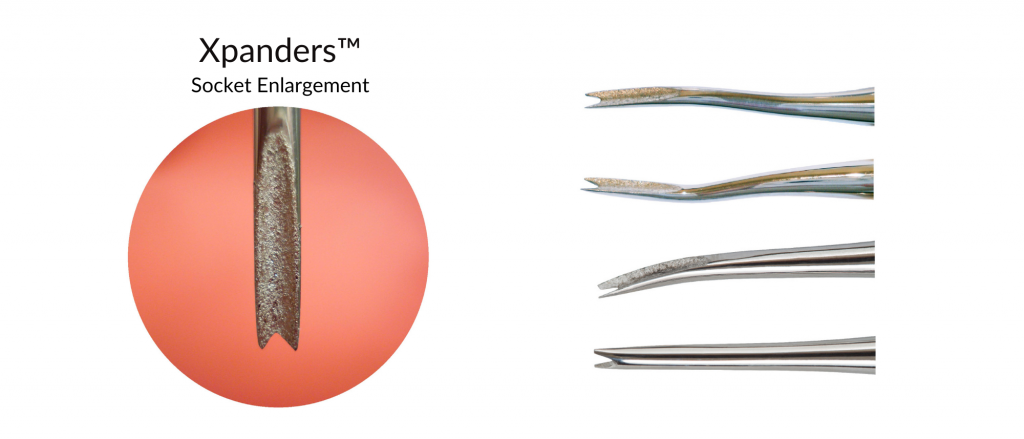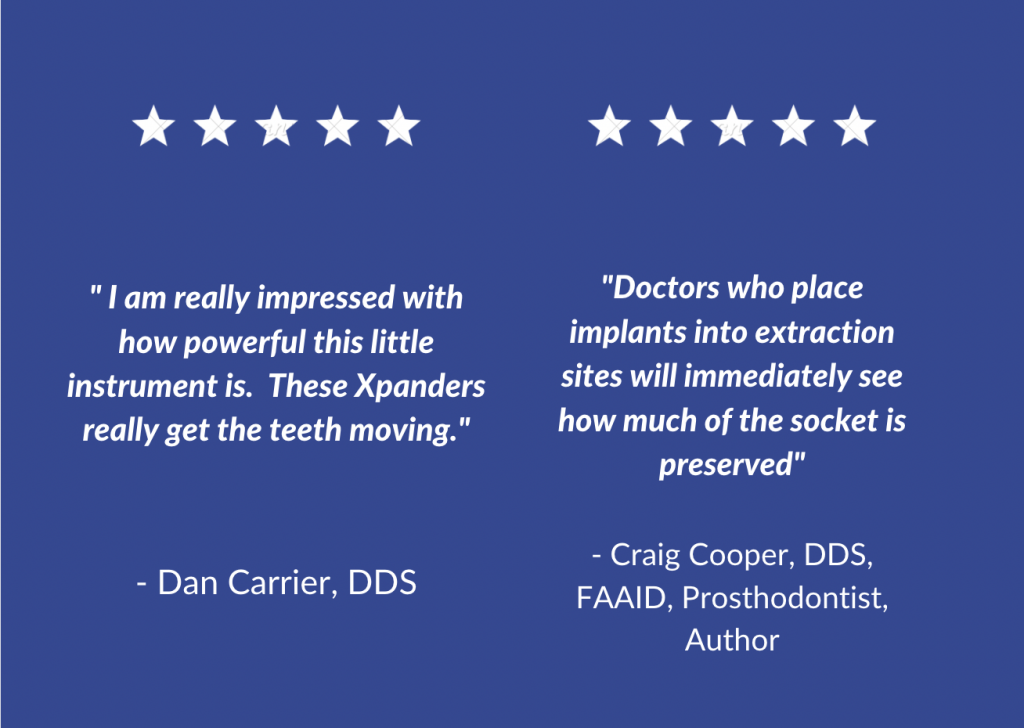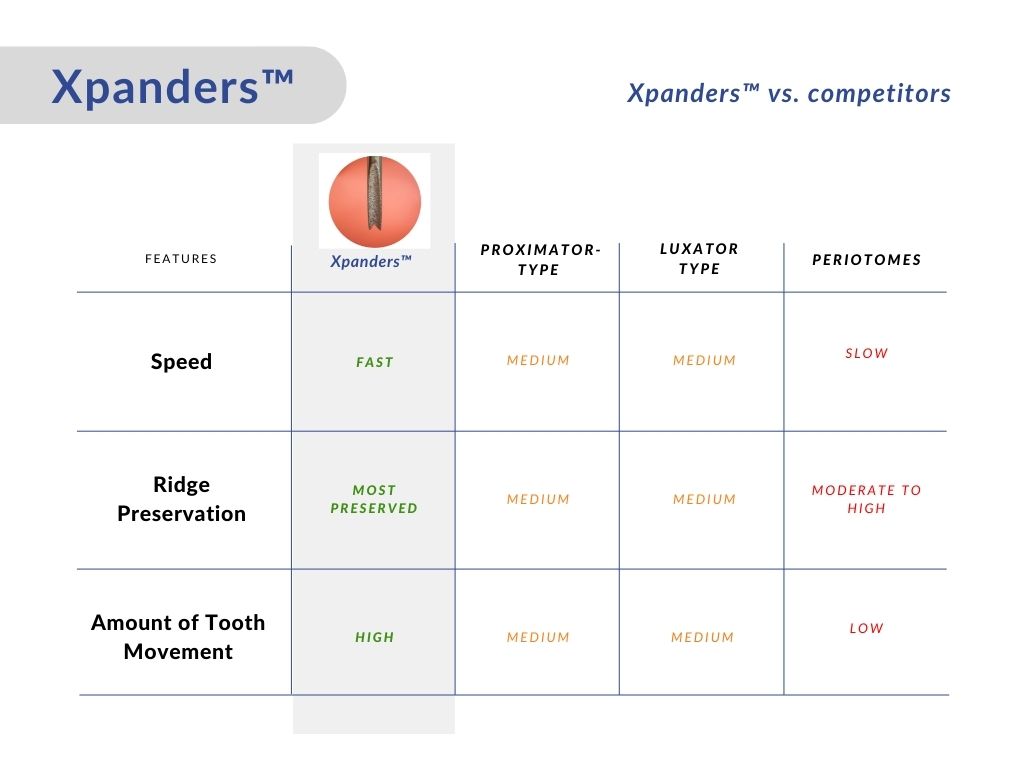Dental Elevator/Dental Extraction Tool
Over the years in practicing dentistry I have certainly had my share of stressful extractions and I am sure you have as well. Many of the newer so-called “atraumatic” dental elevators took far too long, so that added to patient discomfort. I created Xpanders™ to fill a need for an atraumatic, yet faster tool to use for extractions. I am proud to say that Xpanders™ are the most atraumatic elevators devised to date. I think you will find, thanks to Xpanders™, your extractions will be less stressful and more predictable also.

I now use Xpanders™ on 90% of all of my extractions, and I have very few of the dreaded deep broken root tip mishaps, and I don’t have hardly any “fall behind schedule” extractions any more.

The double-pronged, diamond grip action allows for a stable two point contact between the crest of bone and the neck of the tooth.
How it works:
The first step in any extraction and the ultimate goal of elevation is for you to make the tooth very, very mobile in all dimensions, and Xpanders™ do just that. Because Xpanders™ only penetrate one-fourth to one-half millimeter into the bone or PDL space, they are less invasive than all other PDL-type instruments.
The double prong action of these instruments gives the user a distinct advantage. With insertion, then pushing and twisting of the instrument, one of the prongs acts as a purchase point by minimally entering the bone or PDL space, while the other prong swings around to push the tooth directly laterally.
Why Other Dentists Love this Tool:
- Atraumatic bone preserving elevators
- Ideal for implant cases and future bridges
- A must have for broken down, decayed roots

Tool Advantages:
While testing my prototype, I quickly discovered that Xpanders™ got the teeth moving much faster than other instruments in its class – especially if I alternated back-and-forth with my 301 straight elevator.
This instrument truly gives you the power of 360 degree socket expansion.
Evolution of Atraumatic tools:
Since the advent of implants, extraction techniques have evolved dramatically over the years– mainly for the purpose of ridge and bone preservation. Periotomes, proximators, luxators, and a variety of other instruments (PDL instruments) have been developed to create an entire category of “atraumatic” extraction tools.
When I started using these “atraumatic” PDL instruments years ago, I liked the results and saw an improvement, but I began to notice that many of my extractions were taking much longer to perform (especially when periotomes were used). Additionally, these instruments did not always work in many of the cases. It was then that I decided to come up with a better, more efficient, and FASTER method, so Xpanders™ were born!

Comments are closed.